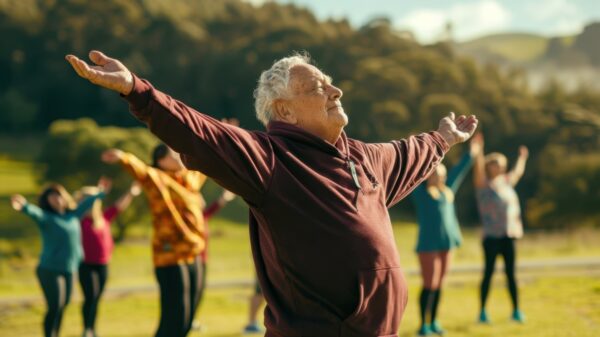As we age, maintaining balance becomes increasingly important for preventing falls, which are one of the leading causes of injury among senior citizens. The good news is that with regular exercise, seniors can significantly improve their balance, strengthen their muscles, and reduce their risk of falling. John Telesca of Port Chester provides a comprehensive guide to balance exercises that are particularly beneficial for seniors, along with practical tips on how to incorporate these exercises into daily routines.
The Importance of Balance Exercises for Seniors
Falls are a serious concern for older adults, often leading to injuries that can impact their independence and quality of life. Balance exercises are crucial because they help improve stability, coordination, and muscle strength, all of which contribute to better balance. By regularly engaging in balance exercises, seniors can enhance their ability to perform daily activities safely and confidently.
Key Benefits of Balance Exercises
- Improved Stability: Regular balance exercises help strengthen the muscles in the legs, core, and lower back, which are essential for maintaining stability.
- Enhanced Coordination: Balance exercises also improve coordination between the brain and muscles, reducing the likelihood of stumbling or losing balance.
- Increased Muscle Strength: Strengthening exercises, often included in balance routines, support the body’s ability to remain upright and steady.
- Boosted Confidence: As seniors feel more stable, they gain confidence in their ability to move freely, which can lead to increased physical activity and overall well-being.
Essential Balance Exercises for Seniors
The following exercises are designed to be simple yet effective for improving balance. These exercises can be performed at home with minimal equipment, making them accessible to most seniors.
1. Single-Leg Stance
Instructions:
- Stand behind a sturdy chair or next to a counter for support.
- Slowly lift one foot off the ground, balancing on the other leg.
- Hold this position for 10 to 15 seconds, then switch to the other leg.
- Repeat 5 to 10 times on each leg.
Benefits: This exercise strengthens the muscles around the ankles and hips, which are critical for balance.
2. Heel-to-Toe Walk
Instructions:
- Stand with your feet together.
- Take a step forward by placing the heel of one foot directly in front of the toes of the other foot.
- Walk in a straight line, placing one foot directly in front of the other.
- Aim to walk 20 steps forward, turn around, and walk back.
Benefits: This exercise improves coordination and helps with maintaining a steady gait.
3. Toe Raises
Instructions:
- Stand next to a wall or hold onto a sturdy chair for support.
- Slowly rise onto the balls of your feet, lifting your heels off the ground.
- Hold the position for a few seconds, then slowly lower your heels back to the ground.
- Repeat 10 to 15 times.
Benefits: Toe raises strengthen the muscles in the lower legs and improve balance when standing.
4. Side Leg Lifts
Instructions:
- Stand behind a chair or next to a counter for support.
- Slowly lift one leg out to the side, keeping your back straight and avoiding tilting your upper body.
- Hold the position for a few seconds, then lower your leg.
- Repeat 10 to 15 times on each leg.
Benefits: This exercise strengthens the hip muscles, which are essential for lateral stability.
5. Chair Sit-to-Stand
Instructions:
- Sit in a sturdy chair with your feet flat on the floor and your hands resting on your thighs.
- Slowly stand up from the chair without using your hands for support.
- Sit back down slowly and repeat 10 to 15 times.
Benefits: This exercise mimics the movement of getting up from a seated position, which is a common activity that requires good balance and leg strength.
6. Standing March
Instructions:
- Stand next to a counter or behind a chair for support.
- Slowly lift one knee towards your chest, as if marching in place.
- Lower your foot and repeat with the other leg.
- Continue marching in place for 30 seconds to 1 minute.
Benefits: This exercise improves coordination and balance while also strengthening the legs and hips.
Tips for Incorporating Balance Exercises into Daily Routines
- Start Slow and Progress Gradually
For seniors who are new to balance exercises, it’s important to start with simpler exercises and gradually increase the difficulty as strength and confidence build. Begin with just a few repetitions of each exercise, and slowly work up to more as comfort levels increase.
- Consistency is Key
To see improvement, consistency is essential. Aim to perform balance exercises at least three times a week, and try to incorporate them into your daily routine. For example, practice the single-leg stance while brushing your teeth or the heel-to-toe walk when moving from one room to another.
- Safety First
Always prioritize safety when performing balance exercises. Use a chair, counter, or wall for support as needed, and avoid exercises that feel too challenging or uncomfortable. It’s also a good idea to wear supportive shoes and ensure the exercise area is free of clutter.
- Incorporate Variety
To keep things interesting and engage different muscle groups, try to incorporate a variety of balance exercises into your routine. This can help prevent boredom and ensure a more comprehensive approach to improving balance.
- Consult a Healthcare Professional
Before starting any new exercise routine, it’s advisable for seniors to consult with a healthcare professional, especially if they have any pre-existing health conditions or concerns about their balance.
Improving balance is a critical aspect of fall prevention for seniors, and the exercises outlined in this guide provide a practical and effective way to enhance stability, coordination, and muscle strength. By incorporating these exercises into daily routines, seniors can reduce their risk of falls, maintain their independence, and enjoy a higher quality of life. Remember, consistency and safety are key to success, so start slowly, stay committed, and seek support from healthcare professionals if needed.
